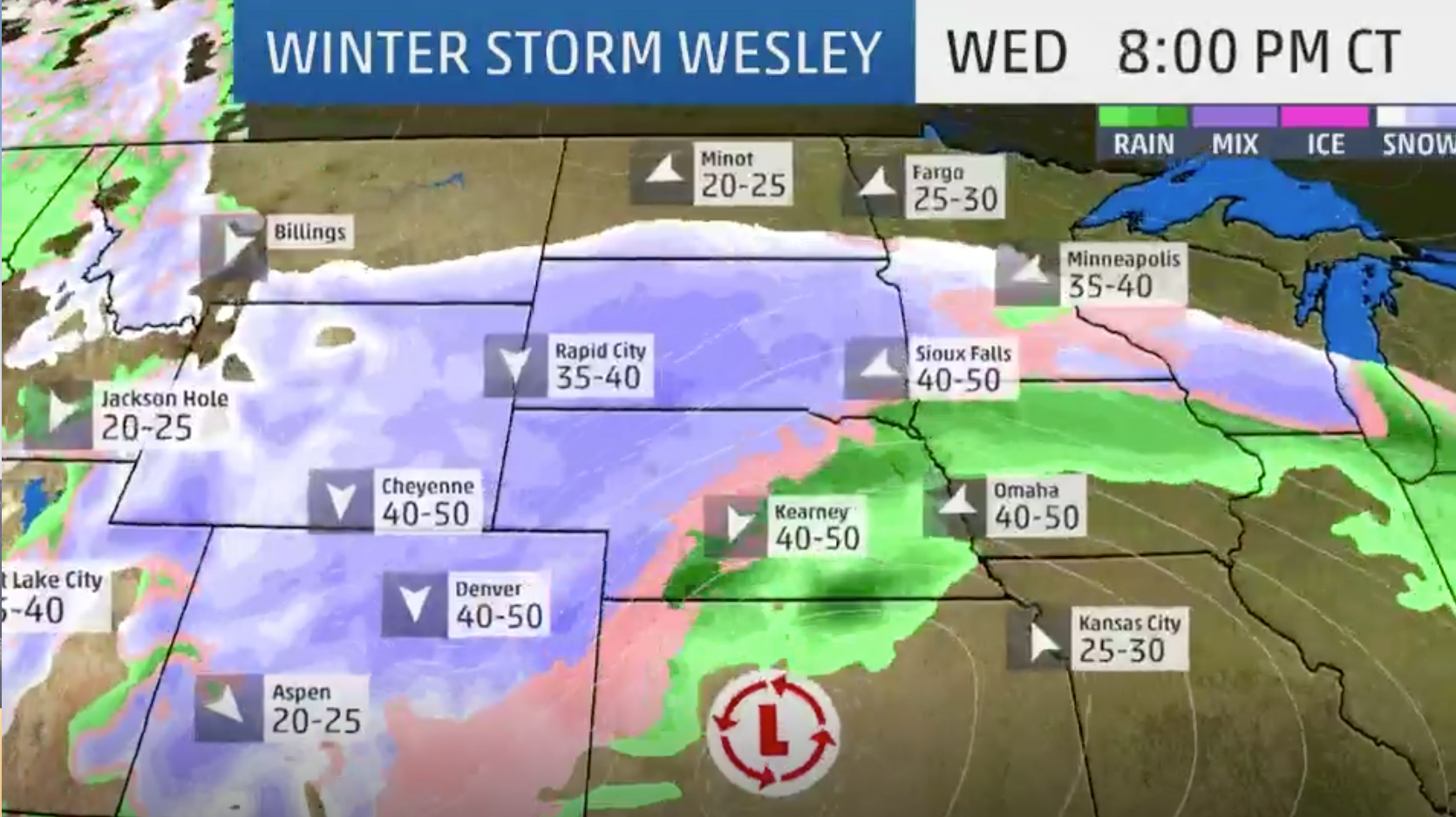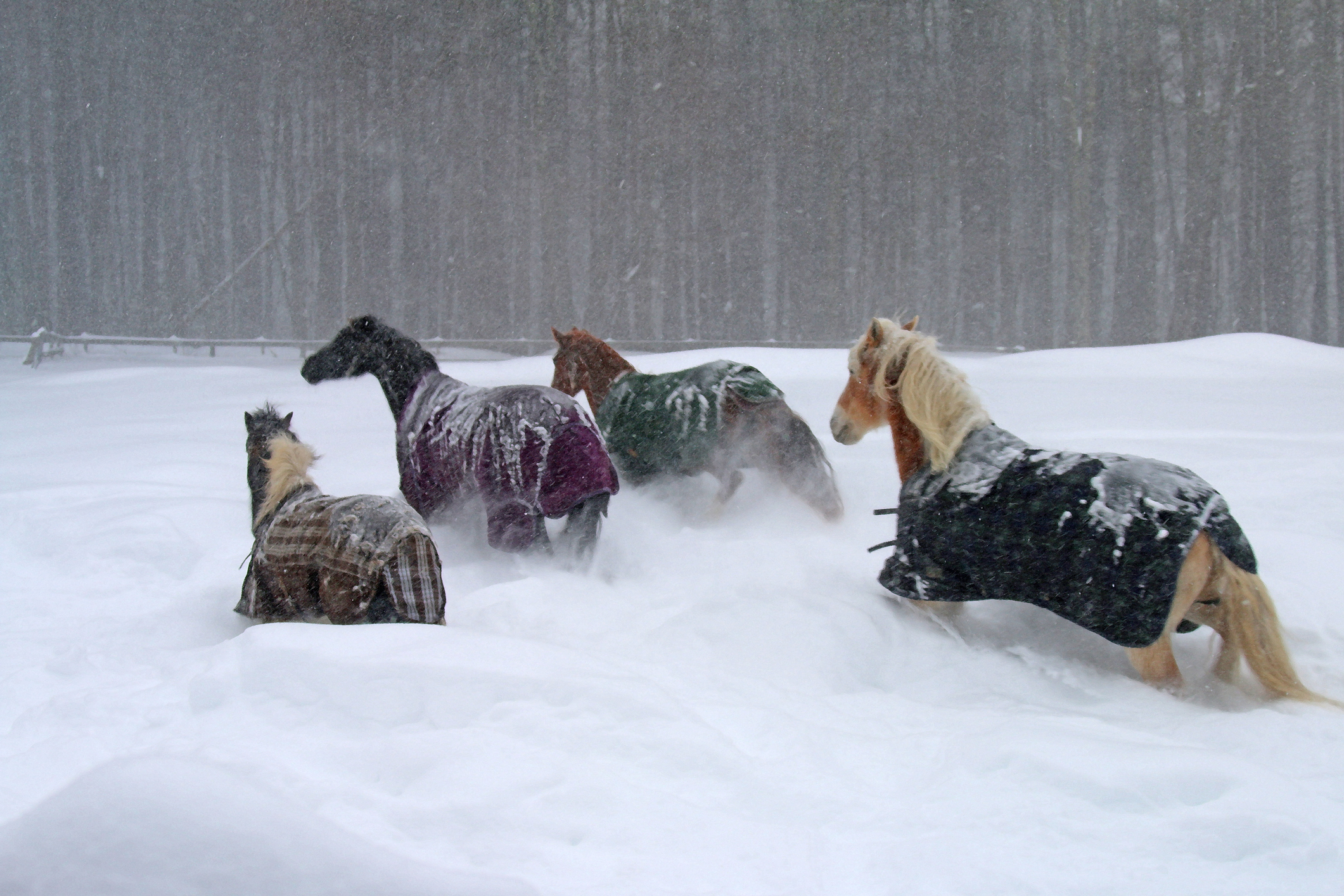It’s 5 a.m., and I roll over to my iPhone alarm buzzing its “Presto” tune, a sound that’s something like a slot-machine jackpot buzzer gone wrong.
The alarm isn’t all that necessary—I didn’t get much sleep last night anyhow, dreading what’s on its way today and all that needs done to get ready for it.

April 10, 2019, will mark the second bomb cyclone (or intense winter storm) of the spring for us lucky agriculturalists in Northern Colorado. It was 80 degrees April 9, and far too warm by bed time that night to put any blankets on any horses in the pastures on our little slice of heaven.
But now the wind is howling, even though the moisture hasn’t begun to fall. Before the storm hits, let me break down what’s so much fun about owning horses (or other livestock) in a blizzard.
Spring blizzards are fun because they usually begin with a drenching rain to soak any livestock to the bone before the ice then snow starts.
Don’t get me wrong, we need the moisture… but this is painful. So while the coffee brews, I gather blankets I had hoped were long-since hung up for the summer. This task has to start at 5 a.m., because the rain will start by 7 and a wet horse won’t stay warm for long. Most of the blankets need post-winter repairs, so sorting through which ones are usable and which ones aren’t is the first fabulous task of the morning.
Blanketing loose horses in a pasture, as the weather changes and their energy levels skyrocket, is so safe and easy.
Mind you: I’m doing this before the coffee is ready.
Most of my horses have had their spring deworming already, helping to accelerate their shedding process. Their thin hair coats aren’t quite prepared for what’s on its way.
[TEST YOUR KNOWLEDGE: Winter Blanket Trivia]
With a bucket of feed and in the pitch black, one by one I catch the pasture full of mares. Two are maiden mares ready to foal (perfect timing!) so they will miss out on blanketing, because a colt coming out and tangling itself in blanket straps sounds like even more fun than pulling a colt from a mare in a blizzard.
[READ MORE: Tips for Winter Warmth]
Somewhere between catching and blanketing my already-foaled broodmare and blanketing a 5-year-old, I get the air knocked out of me by that broodmare’s head, straight to my chest, as she runs another mare away from her colt and the bucket of grain. Doing my best to not chuck the bucket at all of them and give up, I move on to the gentle, 26-year-old senior who keeps watch on the chaos in the pasture.

There’s nothing like a 50-degree swing in the weather to tell you how your old horse is aging and how the immune systems are developing in your colts.
While blanketing that 26-year-old, I remembered to slip her some NSAIDs to help with the arthritis that will surely flair up as the snow and ice build up around her round bale feeder and as the walk to the waterer gets more treacherous.
Everything is on full-feed and the grass is coming in, but that doesn’t mean they won’t come out of this mess with snotty noses and coughs that hopefully don’t turn into something more.
Not to mention, a weather change like this is a sure-fire way to improve your skills in managing colic, and can even improve your communication skills and quality time with your trusted veterinarian. Poor Dr. Stricklin is on my speed dial.
[LEARN MORE: 15 Savvy Winter Tips]
[READ MORE: Keep Your Horse in a Vet-Friendly Barn]
If you’ve been getting antsy waiting for a mare to foal or a heifer to calve, the wait is over!
Don’t worry, there’s no time like April for babies, and there’s nothing like a pressure drop to induce labor. Who doesn’t love crashing through six-foot snow drifts in a skid steer in to get a path cleared to the heifer or maiden mare who “decided” now is the time to push.
Spring blizzards are another great chance for an equine-inspired cross-fit session.
The last time a spring storm rolled around, I got to crack out the shovel just to dig a path to my horses’ outdoor waterers from their inside stalls. Spring snow—packed with much-needed moisture to make the grass grow—is as heavy as snow gets, so there’s no time like the present to up your deadlift PR.

Nothing amps up a pasture of 2- and 3-year-olds like 70 mile-an-hour winds.
When everything is fed and tucked away as safely as possible, all that’s left to do is watch helplessly out the window from in front of the fireplace as the colts (the ones that cost thousands to breed and raise to get to the point of [finally!] being able to ride) careen around the pasture as fast as they can. When they’re not biting one another and standing on their back feet in battle, they’re running laps and ducking and diving, almost crashing into the fence at every turn.
Shoot—the aged, finished horses nestled in their barn stalls with runs are lapping their 40-foot runs, basically taunting me, threatening to end their summer competition season before it begins with a slip that tears a deep flexor or pulls a stifle or cracks a coffin bone or chips a knee or…
[BE PREPARED: Your Best Equine First-Aid Kit]
And in the end, they’ll probably just stand outside the barn or out of their sheds, anyway.
After all of the hours spent carefully tucking each horse into their stall, making sure each one is blanketed and well fed, they’ll still likely stand outside in the rain, then, ice, then snow, as I fret from my kitchen window. Maybe that 26-year-old might take refuge in her well-made, freshly cleaned shed, but chances are, the rest of the knuckle heads will relish in the weather, no matter how hard I worked to keep them warm and dry. H&R
Important Caveat: I write this in jest, as my heart breaks for those in the Midwest who are still suffering the consequences of the brutal flooding left by our March bomb cyclone. To donate to those affected by the terrible weather that ravaged the region, click here.




